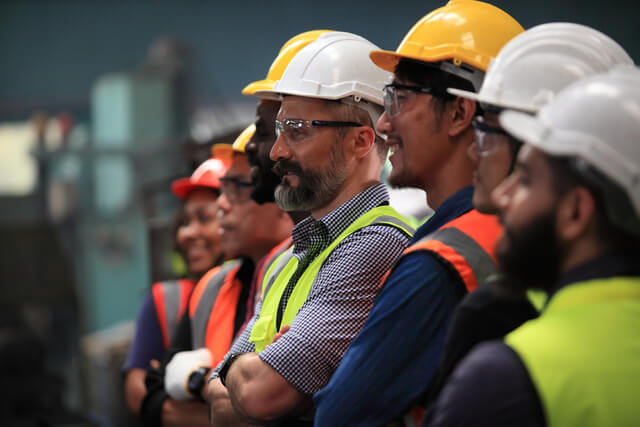Rockfall protection should never be overlooked in construction. It may seem like a minor concern, but ignoring it can lead to costly damage, delays, and serious accidents. In areas with steep slopes or rocky terrain, preventing rockfall hazards is essential to maintaining safety and ensuring smooth project progress.
For civil engineers, rockfall protection is not only about safety but also about the success and sustainability of a project. Proper protection helps avoid unexpected costs and delays that could affect both the timeline and the budget. Ignoring rockfall risks can result in consequences that many engineers may not initially consider, including long-term financial and safety impacts.
Understanding Rockfall Risks
Rockfalls occur when loose rocks or debris tumble down from slopes, cliffs, or hillsides and land on roads, structures, or construction sites below. These events can be triggered by weather conditions, earthquakes, or human activity. On construction sites, rockfalls pose serious risks, from equipment damage and project delays to the safety of workers.
In regions such as the Central Coast, where the landscape features steep slopes and rocky terrain, rockfall protection is especially critical. Areas that experience frequent rain or seismic activity are more likely to face rockfall incidents. A thorough understanding of local conditions allows engineers to design and implement effective protection systems.
For example, when applying rockfall protection central coast solutions, engineers must consider the specific geographical and climatic risks of the region. This helps ensure that protective measures are both practical and reliable.
Protecting construction sites from rockfalls begins with understanding how and why they occur. In most cases, rockfalls result from natural forces acting on unstable ground. However, some conditions increase the likelihood of these events, such as heavy rainfall, soil erosion, or nearby excavation.
Once engineers identify potential risks, they can take the necessary steps to minimize the chances of rockfall incidents and safeguard workers, structures, and equipment.
The Impact of Rockfall on Construction Projects
When rockfalls occur on a construction site, the consequences can extend far beyond immediate damage. Equipment may be destroyed, vital materials can be lost, and work can come to a halt. The financial impact is significant, as replacing or repairing damaged assets consumes both time and money. These interruptions also push back completion dates, which affects the overall schedule and budget.
Beyond financial losses, rockfalls directly endanger worker safety. Even with protective gear, falling rocks can cause serious injury or death, especially when workers operate near unstable slopes. In some situations, rockfalls can also endanger the public if a construction site is located close to roads or residential areas.
Delays caused by rockfalls can lead to frustration for project stakeholders. Tight deadlines and budgets leave little room for error, and setbacks can harm a company’s professional reputation. Clients expect projects to be delivered on time and within budget, and repeated disruptions reflect poorly on the construction team.
Addressing potential rockfall risks at the planning stage prevents these complications and ensures smoother operations. It is far more efficient and cost-effective to prevent rockfalls than to deal with their aftermath.
Methods of Rockfall Protection
There are several ways to protect a construction site from rockfall hazards, and the right solution depends on the site’s terrain and environmental conditions. One of the most common approaches involves the installation of physical barriers such as rockfall nets or catch fences.
These barriers are designed to stop or redirect falling rocks before they reach lower areas where people or equipment might be exposed. Steel is often used for these barriers due to its strength and durability.
Another effective approach is slope stabilization. Engineers can strengthen hillsides using rock anchors, bolts, retaining walls, or even vegetation that helps hold the soil and rocks in place. Stabilizing the slope reduces ground loosening and prevents rocks from detaching and rolling downhill.
Some construction sites benefit from a combination of both methods. For instance, a stabilised slope supported by a catch fence provides two layers of protection. This approach ensures that even if rocks become dislodged, they are intercepted before causing damage or injury.
Selecting the most effective solution requires a detailed site assessment.
Engineers must evaluate slope steepness, rock type, weather patterns, and soil composition to determine the appropriate protection measures. Each project is unique, and careful analysis ensures the chosen method suits the specific site conditions.
Legal and Ethical Considerations
Safety is a fundamental responsibility in construction. Civil engineers have a legal obligation to ensure their projects are adequately protected against rockfalls. Failure to address these risks can result in severe legal consequences if an accident occurs. Engineers and contractors may be held accountable if it is determined that sufficient protection measures were not in place.
In addition to legal requirements, engineers have an ethical duty to protect workers, contractors, and nearby communities. This responsibility involves planning ahead to prevent potential rockfall incidents and ensuring that safety remains a core consideration in every phase of construction. Implementing robust rockfall protection reflects professionalism and a commitment to ethical practice.
Neglecting to implement these measures can lead to preventable accidents, legal disputes, and lasting reputational harm. Taking proactive steps is not merely about meeting regulations but about maintaining high standards of safety and integrity within the engineering profession.
Wrap Up
Rockfall protection should always be a key consideration in construction planning, regardless of the site’s location or terrain. It plays an essential role in preventing accidents, protecting workers, and preserving project efficiency. By prioritizing proper rockfall protection, civil engineers can avoid unnecessary costs and delays while upholding their professional and ethical responsibilities.
Effective rockfall protection central coast strategies demonstrate that prevention is far more valuable than reaction. By taking proactive measures, engineers build not only safer construction sites but also stronger reputations for reliability and care. In doing so, they help shape a safer and more sustainable future for infrastructure development.
